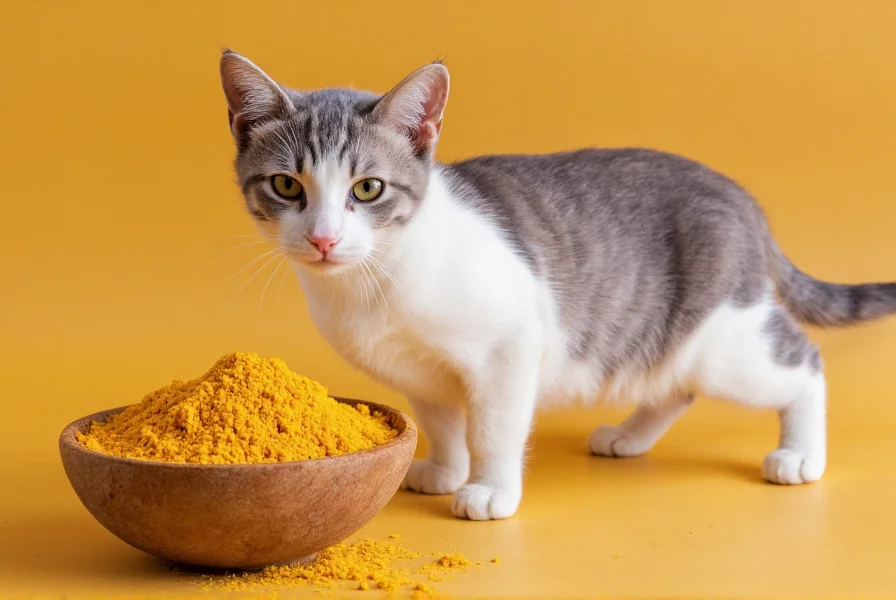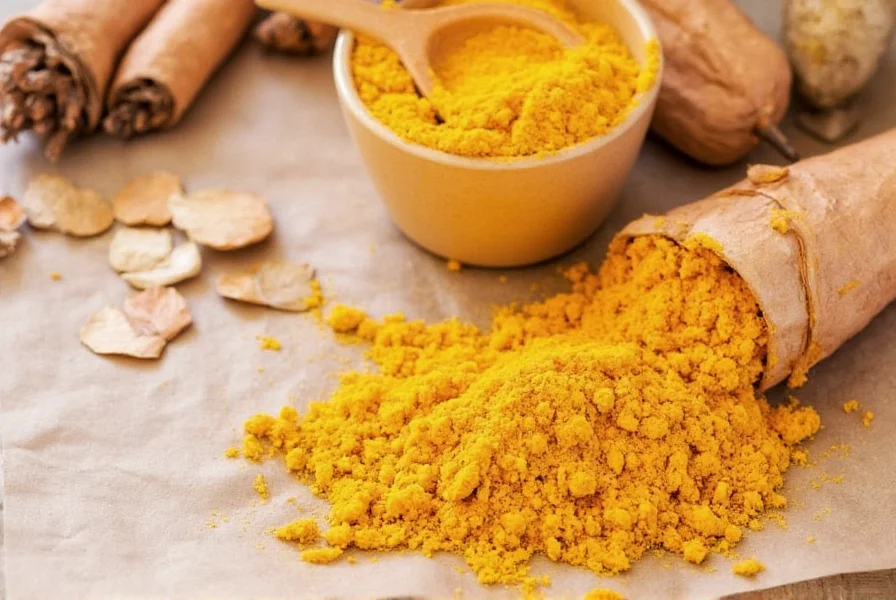Understanding Turmeric's Role in Feline Health
As pet owners increasingly explore natural supplements for their cats, turmeric has gained attention for its potential health benefits. This golden spice, commonly used in human wellness routines, contains curcumin—a compound with documented anti-inflammatory and antioxidant properties. However, when considering turmeric for cats with arthritis or other health concerns, it's crucial to understand feline physiology differs significantly from humans.
Cats lack certain liver enzymes that process compounds like curcumin, making them more susceptible to adverse effects from improper supplementation. While some cat owners report positive results using turmeric for inflammatory conditions, scientific research specifically on feline turmeric use remains limited. Most studies focus on humans or dogs, requiring careful interpretation when applying findings to cats.
Evidence-Based Benefits of Turmeric for Cats
Current understanding of how turmeric helps cats comes from preliminary research and veterinary observations:
| Potential Benefit | Scientific Support Level | Important Considerations |
|---|---|---|
| Anti-inflammatory effects | Moderate (extrapolated from human/dog studies) | May help with arthritis but requires proper formulation |
| Antioxidant properties | Low (limited feline-specific research) | General cellular protection but dosage critical |
| Digestive support | Minimal | High doses can actually cause digestive upset |
Research published in the Journal of Feline Medicine and Surgery notes that while curcumin shows promise for inflammatory conditions, feline turmeric absorption rates are significantly lower than in other species without proper formulation. This explains why simply adding turmeric powder to cat food provides minimal benefit.

Safety First: Critical Guidelines for Turmeric Use
Before considering turmeric supplementation for your cat, understand these essential safety parameters:
Dosage Requirements
The appropriate turmeric dosage for cats depends on multiple factors including weight, health status, and formulation. General guidelines suggest:
- 1/8 to 1/4 teaspoon of high-quality turmeric powder per 10 pounds of body weight
- Daily maximum: No more than 1/4 teaspoon for most adult cats
- Always start with the lowest possible dose and monitor for reactions
Proper Formulation Matters
For cats to benefit from turmeric, proper formulation is essential. Pure turmeric powder has extremely low bioavailability. To enhance absorption:
- Combine with black pepper (contains piperine which increases absorption by 2000%)
- Mix with healthy fats like coconut oil or fish oil
- Consider vet-approved curcumin supplements specifically formulated for cats
When Turmeric Becomes Dangerous for Cats
Certain health conditions make turmeric potentially harmful. Avoid turmeric supplementation if your cat has:
- Gallbladder issues or bile duct obstruction
- Blood clotting disorders
- Diabetes (turmeric may affect blood sugar)
- Undergoing surgery (stop supplementation at least 2 weeks prior)
- Taking medications like chemotherapy drugs or blood thinners
Common side effects of improper turmeric use in cats include:
- Diarrhea or vomiting
- Increased thirst and urination
- Allergic skin reactions
- Worsening of existing health conditions
Administering Turmeric: Practical Tips
Successfully introducing turmeric to your cat's regimen requires patience and proper technique:
Best Administration Methods
- Mix with strong-smelling wet food to mask flavor
- Create a "golden paste" with turmeric, black pepper, and coconut oil
- Use vet-approved liquid formulations for easier dosing
- Never force administration—this creates negative associations
Monitoring and Adjustment
Track your cat's response carefully during the first 2-4 weeks:
- Keep a daily journal of behavior, appetite, and litter box habits
- Watch for subtle improvements in mobility for cats with arthritis
- Discontinue immediately if any adverse reactions occur
- Schedule follow-up veterinary checkups to monitor health markers
When to Consult Your Veterinarian
Professional guidance is essential when considering natural supplements for cats with health issues. Consult your veterinarian:
- Before starting any turmeric regimen
- If your cat has pre-existing health conditions
- When combining with other medications or supplements
- If you notice any adverse reactions
- For regular health monitoring while using supplements
Remember that turmeric should never replace conventional veterinary treatment for serious conditions. It may serve as a complementary approach under professional supervision, but is turmeric safe for cats depends entirely on individual circumstances and proper veterinary guidance.
Conclusion: A Cautious Approach to Feline Wellness
While turmeric shows potential as a natural supplement for cats, responsible usage requires understanding both benefits and limitations. The key to safely incorporating turmeric into your cat's wellness routine lies in professional veterinary guidance, proper formulation, and careful monitoring. As research continues to evolve, staying informed through credible veterinary sources remains essential for making the best decisions for your feline companion's health.
Frequently Asked Questions
Can I give my cat human turmeric supplements?
No, human turmeric supplements are generally not appropriate for cats. They often contain higher concentrations of curcumin and additional ingredients that may be harmful to felines. Always use supplements specifically formulated for cats under veterinary guidance.
How long does it take to see results from turmeric for cats?
Visible improvements typically take 4-8 weeks of consistent, properly dosed supplementation. Some cats may show subtle changes in mobility or comfort within 2-3 weeks, but significant results require patience and consistent administration with proper formulation.
Is turmeric good for cats with kidney disease?
No, turmeric is generally not recommended for cats with kidney disease. The compound may increase strain on compromised kidneys and potentially interact with medications used for renal conditions. Always consult your veterinarian before giving any supplements to cats with kidney issues.
Can turmeric help with cat cancer treatment?
While some preliminary studies suggest curcumin may have anti-cancer properties, turmeric should never replace conventional cancer treatment for cats. It may potentially serve as a complementary approach under strict veterinary supervision, but never as a standalone treatment for feline cancer.
What's the best way to store turmeric for cats?
Store turmeric in an airtight container away from light and heat. Properly formulated golden paste can be refrigerated for up to two weeks or frozen in ice cube trays for longer storage. Always check for freshness and discard if you notice any changes in color, smell, or texture before administering to your cat.











 浙公网安备
33010002000092号
浙公网安备
33010002000092号 浙B2-20120091-4
浙B2-20120091-4